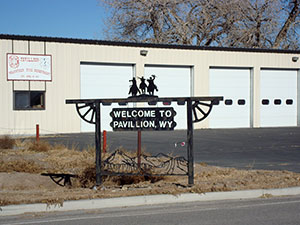When the Environmental Protection Agency released a report in 2011 linking groundwater contamination in Pavillion, Wyoming to fracking, it sparked a national debate about the safety of oil and gas drilling. Response to the latest report on Pavillion groundwater contamination, released Wednesday, was considerably more muted, with just a handful of articles in the local media.
In contrast to the EPA report (which never made it to a final draft), the State of Wyoming’s draft report concludes there’s NO EVIDENCE fracking polluted water wells. The report’s lead author, petroleum engineer Bob King, said they found “all [the wells] were drilled in compliance with rules and regulations and industry practices.”
The reviewers looked at data about how the wells were cemented to keep the oil in and water out, and their mechanical integrity to hold up under pressure. They didn’t have access to detailed data about individual “frac jobs” at each of the 50 wells, which King says might have helped them spot any irregularities, “but in the information that was provided, which is reasonably complete, we saw [no irregularities].”
If that sounds like a less-than-sure response, King says, it’s not. Although the report’s “recommendations for further action” include a suggestion to look at the water wells themselves and to do a comprehensive geologic and hydrologic study, as well as a request for access to “all available stimulation treatment records” (i.e. records about frac jobs), King says he’s confident in their conclusion that the gas wells aren’t to blame. But, he adds, the report is open for public comment so any mistakes can be pointed out.
That wasn’t always the case. Until recently, the state had only been planning to release the draft report to the EPA and Encana, the oil and gas company some accuse of polluting the water. The Powder River Basin Resource Council was one of the groups that pushed for it to be made public. Organizer Jill Morrison says they’ve hired an independent consultant to get a second opinion on its conclusions.
This won’t be the last report about the potential sources of Pavillion’s contamination problem. The state is in the process of writing two more reports, which are expected to come out sometime this year. The first will look at wastewater disposal pits and the other will look at the contaminated water wells themselves.
It’s possible one of those will be the smoking gun that finally answers the question of what caused the contamination — but Wednesday’s report certainly isn’t.








